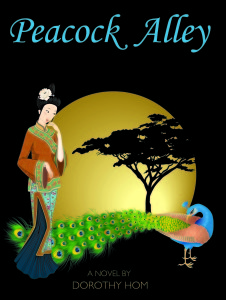Prologue
In 1904, employment in Californ (California), especially in the cities of Loo Sahng (Los Angeles) and Dai Faw (San Francisco) was scarce. Hunger gnawed and desperation for a place to sleep spared none of the common folk.
The rail workers who had swamped California during the building of the railways were used to fat paychecks. Now they found themselves destitute.
Those immigrant Chinese coolies who worked on the railroad migrated early on to menial jobs in shoe and cigar factories, and many went to work on farms. A good many who did not want to leave their city homes did “dirty work” – mopping floors and cleaning toilets and outhouses. A few of the more prosperous Chinese managed to open laundries and bathhouses.
To make ends meet, many Chinese lived fifteen to twenty people in a room. Some labored by day and others by night and shared their beds in shifts. They were all determined to ride out the bad times, managing to save a few dollars each month to bring their families to Gem Sahn (America or “The Golden Mountain.”) Many of the men brought their sons or nephews to the new land so they could labor side by side or help with the family business, adding their monies to the family till. A few far-sighted Chinese sent their sons to the schools of the Fahn Gwai (white man or “White Devil”) in hopes that the next generation of Chinese might cope better with life on the White Devil’s level.
As the economic crush became worse, the idle White Devils began to notice the industrious yellow men (“Chinks”) seemingly doing well. In reaction, they took up the cudgel against the Chinks for usurping their jobs. Fueled by the whites’ uneducated frustration, hatred grew by the day, and soon a cry went out to exterminate the Chinese. The White Devils had found their scapegoat!
Mob violence grew with each jobless day, and anger grew to senseless proportions with the burning, shooting, looting, and killing of Chinese wherever and whenever they were encountered. So common was the murder of Chinese that there arose a phrase among the whites: “A Chinaman’s life is beneath that of his mule.”
A politician running for office seized upon the widespread hatred of the Chinese, building his platform on the cause of the white working man and attacking the “unfair” labor practices of businesses that hired Chinese who were willing to work for lower pay .Thus was planted the unfounded belief that Chinese undercut the white man’s chances of fair wages, thereby robbing him of jobs that would give him the means to retain his dignity and self-respect.
The white businesses for which the Chinese worked fought back, saying the men of their own race refused to do the work the Chinese were doing. They claimed the politician was using the emotional unrest of the white populace to get himself elected. But it was too late; many came to believe that the Chinks were to blame for the Depression.
Thus, in the wee hours before dawn on June 1, 1904, a group of masked white men stealthily crept up the slopes to the terraced farms in an area called the Peninsula on the outskirts of Dai Faw. They stopped at the top, looked around and, seeing the area deserted, raced into the group of buildings housing Chinese farm workers. Those carrying clubs shattered windows; others threw in blazing torches made of rags soaked in oil. Once the tinder-dry buildings were burning furiously, the men darted back down the slopes, jumped onto their waiting horses, and fled into the darkness.”
Peacock Alley by Dorothy Hom, is the compelling story of Liah, a courageous Chinese immigrant wife and mother and her struggle to establish an ethnic community within early 20th Century Los Angeles where the Chinese inhabitants would be safe from the wanton persecution of the “White Devils” and where a traditional Chinese lifestyle could be preserved.
Repeatedly driven from various homesteads by angry mobs and drunken gangs, Liah must overcome not only the challenge of raising her family from poverty, but also the enormous challenge of creating and maintaining a de facto Chinatown government beset with both internal and external intrigues.
Ninety-four year-old author Dorothy Hom takes the reader on a riveting journey with a cast of brilliantly crafted characters who immediately capture the reader’s attention and offer a unique insight into Chinese customs and culture. The overall theme of the importance of family is evident as we follow our heroin, Liah, through her many trials and tribulations. Her efforts to protect her family and her heritage from both the “white devils,” and her own countrymen, make this emotional rollercoaster ride hard to put down.
Hom grew up during the first half of the 20th Century in Los Angeles Chinatown, in what she describes as a motley, dusty, smelly area along Alameda Street near the Union Pacific and Southern Pacific train yards. A precocious child, Dorothy knew everyone in the closely-knit community and everyone knew her. It is said that little children have big ears, and Dorothy was no exception. Otherwise, how could she have known about the many intrigues and passions that played out around town, giving life to the many composite characters she so adroitly brings to this novel.
Although a published poet, this is Hom’s first novel, which she claims was fifty years in the making. She continues to live in Los Angeles enjoying her books, her garden, her friends and members of her family.
“May Kwan Yin shower her blessings upon you and may Kwan Koong watch over you.” With thanks, Dorothy Hom
Leave a Reply